Strengthening research, technological development and innovation
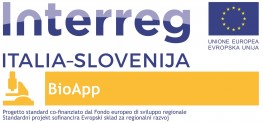
Promoting innovation capacities for a more competitive area
The main objective of the project was to establish a new technology platform by strengthening cooperation between research organizations and key economic stakeholders to accelerate the development of pilot technology in the field of advanced biopolymers. The project has made a positive contribution to the specific objectives of the cross-border cooperation program, namely through the mentioned technological platform, which paves the way for innovative business initiatives and encourages the necessary exchange of knowledge, technology and innovation.
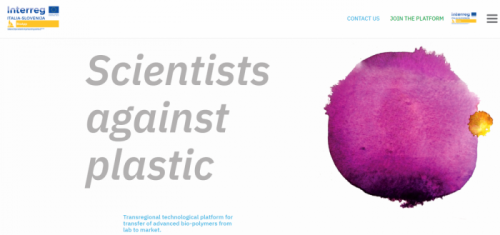
Global aquaculture and shellfish production currently produces over 10 million tonnes of biomass per year, generating a considerable amount of waste in the form of shells and exoskeletons. These abundant yet under-utilised renewable biomasses have enormous potential for the production of advanced materials (biopolymers), and fall within the scope of the Key Enabling Technologies and the key areas of the Smart Specialisation Strategies identified by the “New Materials, Green Chemistry and Health” program.
Numerous research institutes and companies are actively involved in various biopolymer product development stages; however, the synergies and technology transfer dynamics between them are still insufficient.
To overcome these obstacles, the BioApp project developed a new supra-regional technology platform and combined the complementary knowledge and skills of partners, with a vision to promote solutions, development and applicability of commercially interesting highly innovative biopolymers and biomaterials.
Through a regional cooperation effort involving complementary and interdisciplinary partners, ranging from the academic world (UNITS), to public and private research institutes (COBIK, KI), start-ups (BIOPOLife) and medium-sized companies (ACIES BIO), the project provided an integrated solution that uses natural resources to produce materials designed to improve people’s quality of life. All project partners benefit from the developed pilot technology for technology transfer, social and eco-innovation and strengthen links and synergies between companies, research and development centres and in the field of higher education. This trans-regional platform facilitates the integration of new stakeholders through the development of the technology and the commercialisation of the relative product, according to the “economy of closed material cycles” principle, as regards the new business models for a circular economy.
Project BioApp strengthened cooperation and increased interconnection between key stakeholders involved in the development of bio-polymer innovations, both from the public and private sectors within the program area, through their direct involvement in the pilot development of bio-polymer technologies. Their cooperation and the process of developing these technologies was aimed at establishing a sustainable flow of information for the development of current and future products and services with high added value within the program area, thereby increasing competitiveness and stimulating economic growth. By established trans-regional technological platform, this project BioApp provided the means and the space to improve access to knowledge and create opportunities for concrete engagement in the fields of technology transfer, translational research, innovation, and technology in the partners’ common priority areas. Particular attention was dedicated to place SMEs in contact with large, established regional companies, as they represent the main actors in terms of the potential creation of new jobs within the program area.
Lead Partner
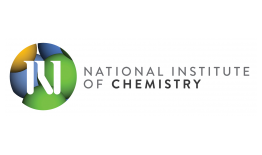
Project partner 1
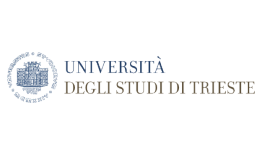
Project partner 2
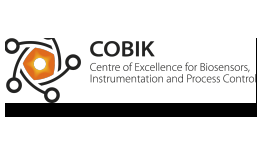
Project partner 3
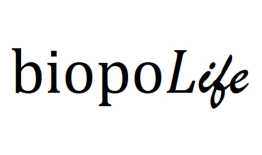
Project partner 4
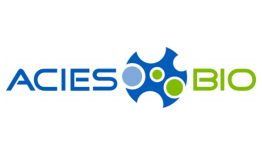
| Poster - annual event 30.05.2018 BioApp_ITA_1.pdf ( 436 bytes, published on 7 June, 2018 - 12:55 ) | |
| BioApp roll-up Rollup Biopp.pdf ( 5 bytes, published on 23 August, 2021 - 13:21 ) | |
| DS 3.2 Biodegradable packaging DS 3.2 Biorazgradlljiva embalaza_Imballaggio biodegradabile.pdf ( 9 bytes, published on 25 August, 2021 - 10:39 ) | |
| DS 3.2 Networking events with regional partners DS 3.2 Dogodki mreženje z regionalnimi parternji_Creazione di reti di conoscenze con partner regionali.pdf ( 2 bytes, published on 25 August, 2021 - 10:39 ) | |
| DS 3.2 Paper and biopolymer packaging DS 3.2 Embalaza iz papirja in biopolimera_Imballaggio ottenuto da carta e biopolimeri.pdf ( 5 bytes, published on 25 August, 2021 - 10:39 ) | |
| DS 3.2 Networking with industry and transfer of good practices DS 3.2 Mreženje z industrijo in prenos dobrih praks_Creazione di reti di conoscenze con industrie e trasferimento.pdf ( 5 bytes, published on 25 August, 2021 - 10:39 ) | |
| DS 3.2 New solutions from biopolymers DS 3.2 Nove resitve iz biopolimerov_Nuove soluzioni dai biopolimeri.pdf ( 6 bytes, published on 25 August, 2021 - 10:39 ) | |
| DS 3.2 Partners included in the platform DS 3.2 Partnerji vključeni v platformi_Partners coinvolti nella piattaforma.pdf ( 145 bytes, published on 25 August, 2021 - 10:39 ) | |
| DS 3.2 Developed pilot ionization for modified biopolymers for biomedical and cosmetic applications DS 3.2 Razvita pilotna ionvacija za modificirane biopolimere za biomedicinske in kozmeticne aplikacije_Sviluppo pilota di innovazione per biopolimeri modificati per utilizzi in mabito cosmetico e biomedico.pdf ( 2 bytes, published on 25 August, 2021 - 10:39 ) | |
| DS 3.2 Developed technology for zero-waste cosmetics DS 3.2 Razvita tehnologija za zero-waste kozmetiko_Sviluppo di una tecnologia per la cosmetica zero-waste.pdf ( 2 bytes, published on 25 August, 2021 - 10:39 ) | |
| DS 3.3 Active and biodegradable biopolymer packaging with added plant extracts DS 3.3 Aktivna in biorazgradljiva embalaža iz biopolimerov z dodanimi rastlinskimi ekstrakti_Imballaggio attivo e biodegradabile ottenuto da biopolimeri con l'aggiunta di estratti da piante.pdf ( 298 bytes, published on 25 August, 2021 - 10:39 ) | |
| DS 3.3 BioApp partner COBIK and transfer of knowledge and good practices from the laboratory to industry DS 3.3 BioApp partner COBIK in prenos znanja in dobrih praks iz laboratorija na industrijo_Il partner di BioApp Cobik e trasferimento delle conoscenze e buone pratiche dal laboratorio ai prodotti industriali.pdf ( 2 bytes, published on 25 August, 2021 - 10:39 ) | |
| DS 3.3 Environmentally friendly food packaging DS 3.3 Okolju prijazna embalaza za zivila_Imballaggio alimentare rispettoso dell'ambiente.pdf ( 134 bytes, published on 25 August, 2021 - 10:39 ) | |
| DS 3.3 Antimicrobial foils for food DS 3.3 Protimikrobne folije za zivila_Pellicole antimicrobiche per imballaggi alimentari.pdf ( 6 bytes, published on 25 August, 2021 - 10:39 ) | |
| BioApp - promotional materials BioApp_Promocijski material.png ( 881 bytes, published on 26 August, 2021 - 09:23 ) | |
| BioApp - Project Brochure BioApp__brochure_ENG.pdf ( 18 bytes, published on 26 August, 2021 - 09:23 ) | |
| E-newsletters archive published during the BioApp project BioApp e-newsletter archive.pdf ( 84 bytes, published on 25 November, 2021 - 12:18 ) | |
| DS 3.1 Chitosan-based films with incorporated supercritical CO2 hop extract_antibacterial properties Chitosan-based films with incorporated supercritical CO2 hop extract_antibacterial properties.pdf ( 1 byte, published on 1 February, 2022 - 08:22 ) | |
| DS 3.1 Comparative study on the application of different natural plant-based extracts as active components in biopolymer Comparative study on the application of different natural plant-based extracts as active components in biopolymer-based films.pdf ( 2 bytes, published on 1 February, 2022 - 08:22 ) | |
| DS 3.1 Complex Coacervates between a Lactose-Modified Chitosan and Hyaluronic Acid as Radical Scavenging drug cariers Complex Coacervates between a Lactose-Modified Chitosan and Hyaluronic Acid as Radical-Scavenging Drug Carriers.pdf ( 1 byte, published on 1 February, 2022 - 08:22 ) | |
| DS 3.1 Nucleation reorganization and disassembly of an active network from lactose-modified chitosan mimicking Nucleation reorganization and disassembly of an active network from lactose-modified chitosan mimicking biological matrices.pdf ( 880 bytes, published on 1 February, 2022 - 08:22 ) | |
| DS 3.1 The role played by the molecular weight and acetylation degree in modualting the stiffness and elasticity of chitosan gel The role played by the molecular weight and acetylation degree in modualting the stiffness and elasticity of chitosan gels.pdf ( 1 byte, published on 1 February, 2022 - 08:22 ) | |
| DS 3.1 Active chitosan-chestnut extract films used for packaging and storage of fresh pasta Active chitosan-chestnut extract films used for packaging and storage of fresh pasta.pdf ( 1 byte, published on 1 February, 2022 - 08:22 ) | |
| DS 3.1 Formulation of active food packaging by design linking composition of the film-forming s Formulation of active food packaging by design linking composition of the film-forming solution to properties of the chitosan-based film by response surface methodology (RSM) modelling.pdf ( 1 byte, published on 1 February, 2022 - 08:22 ) | |
| DS 3.1 N-isopropyl chitosan. A pH- and thermo-responsive polysaccharide for gel formation N-isopropyl chitosan. A pH- and thermo-responsive polysaccharide for gel formation.pdf ( 1007 bytes, published on 1 February, 2022 - 08:22 ) | |
| DS 3.1 Reduction in Spoilage Microbiota and Cyclopiazonic Acid Mycotoxin with Chestnut Extract Reduction in Spoilage Microbiota and Cyclopiazonic Acid Mycotoxin with Chestnut Extract Enriched Chitosan Packaging Stability of Inoculated Gouda Cheese.pdf ( 3 bytes, published on 1 February, 2022 - 08:22 ) |
In the BioApp project, the project partners investigated the possibilities of developing and producing advanced materials (biopolymers) from shellfish, i.e. from unused waste marine biomass produced in aquaculture and crustacean hunting. Apart from the fact that this biomass source is largely unused, research and industrial companies developing biopolymers lacked the knowledge to move innovations from development to production.
Therefore, the main objective of the BioApp project was to create a new technological platform to strengthen collaboration between research institutions and key business players to accelerate the development of pilot technologies in the field of advanced biopolymers. The partners involved, from the university (UNITS), public and private research institutions (COBIK, KI), start-up companies (BIOPOLife), and a private company (ACIES BIO), pooled their knowledge and skills and pursued the vision of finding comprehensive solutions, developing and marketing interesting, highly innovative products that combine natural resources and contribute to human well-being.
The main outcome of the project is the Bioapp Platform - a Transregional technology platform for the transfer of advanced biopolymers from the laboratory to the market. It offers a broad network of contacts and collaborations and enables the direct transfer of research, innovation, and technologies between partners in common fields. Research institutions and companies now have access to knowledge; start-ups and spin-offs have easier access to the market with their products. In the cross-border area of Italy and Slovenia, the project ensured a constant flow of information between producers of high added value products made of innovative biopolymer material and developers of services in the food, cosmetics, and biomedical industries. The Slovenian-Italian area has thus become one of the leading European centers for biopolymers and the development of advanced technologies for their use in the aforementioned industries.
The platform also contributes to the development of new business models for the transition to a circular economy and, through the commercialization of technology and products, to the deepening of the value chain according to the principle of the "circular economy", to higher competitiveness, economic growth, and new jobs.
The project focused on communication about biomaterials with different target groups. The project partners participated in or (co-) organized 58 workshops or events. Social media are very effective communication channels. Facebook and LinkedIn are active profiles even after the end of the project. Regular posts with popular information on research areas and products increase awareness and understanding of marine biomass waste and the possibilities of its use in new products. Posts with advice on zero-waste raise awareness of the importance of making changes in everyday life that can help protect the environment and improve the quality of life.
The project produced several pilot products from biomaterials. More than ten scientific papers on the subject informed the professional public about the progress made in the efficiency and sustainability of the biorefinery process for recycling biomass from crustacean shells. The project partners have developed materials that can mimic the micro-and macrorheological properties of natural biomaterials based on hitlak, and produced and evaluated food films from chitosan with the addition of various extracts. A library of differently characterized chitosan was developed, depending on the molecular weight and proportion of acetylated units. Chitosan was used to form hydrogels with controlled external gelation. With the scientific results, the project partners participated in the preparation of a manual for the development of packaging in a circular economy, aimed at industry and the interested public. The project results were regularly reported on radio and TV stations, online broadcasts or interviews of the project partners.
During the project, new collaborations were established with start-ups and spin-offs (BiopoLife, 123zero, MibiTo). The collaboration contributed to the development of their products. This type of collaboration is crucial as they are willing to turn innovations into business ideas and create new jobs. Companies from the food, cosmetics, and health industries are key to the transition of developed eco-innovation from laboratory production to the pre-industrial level. The involvement of SMEs was important to gain access to end-users, create a complete value chain and fill the gap typical of innovation-producing research institutions.
The BioApp project is recognized as a generator of solutions to single-use plastic problems and, through its results, is involved in several multilateral and interdisciplinary associations that promote sustainable development and innovation.